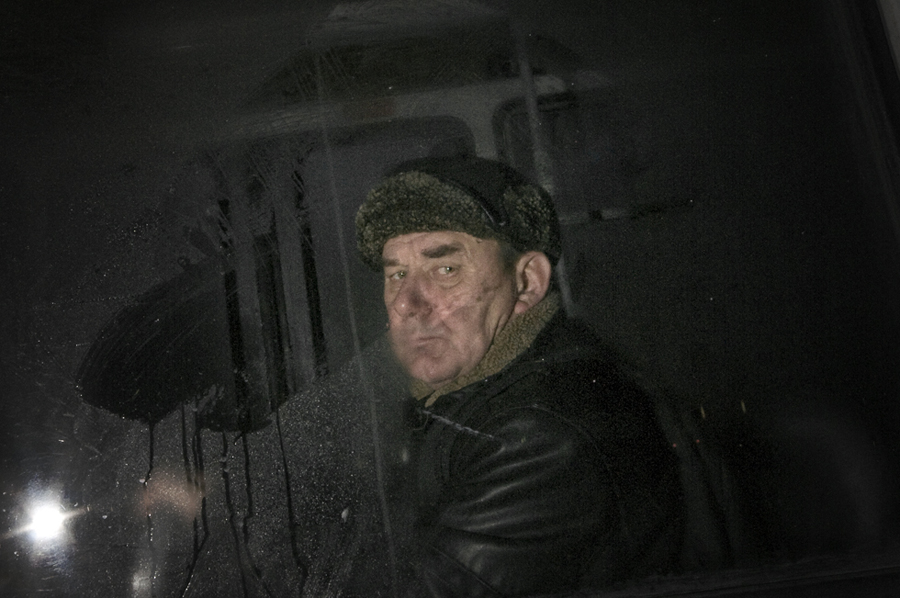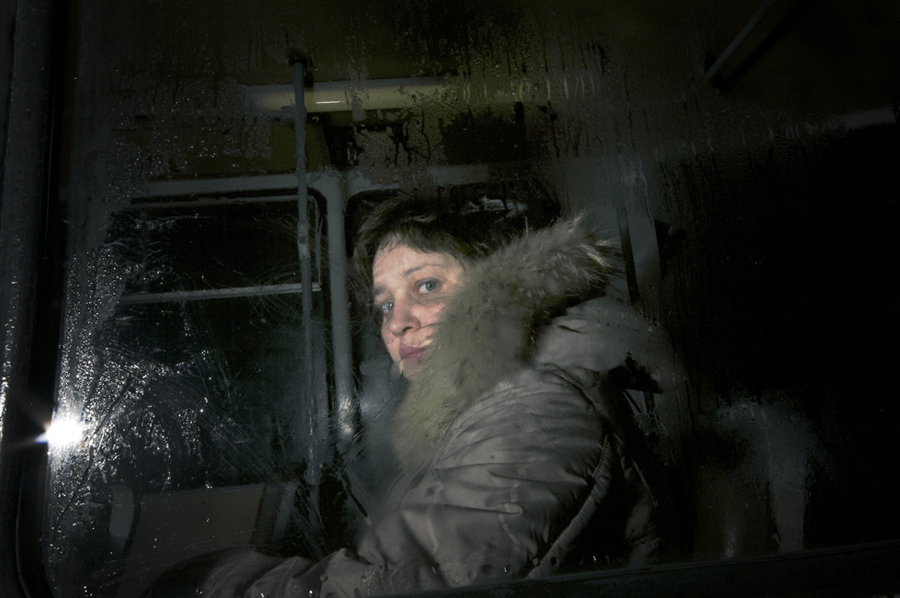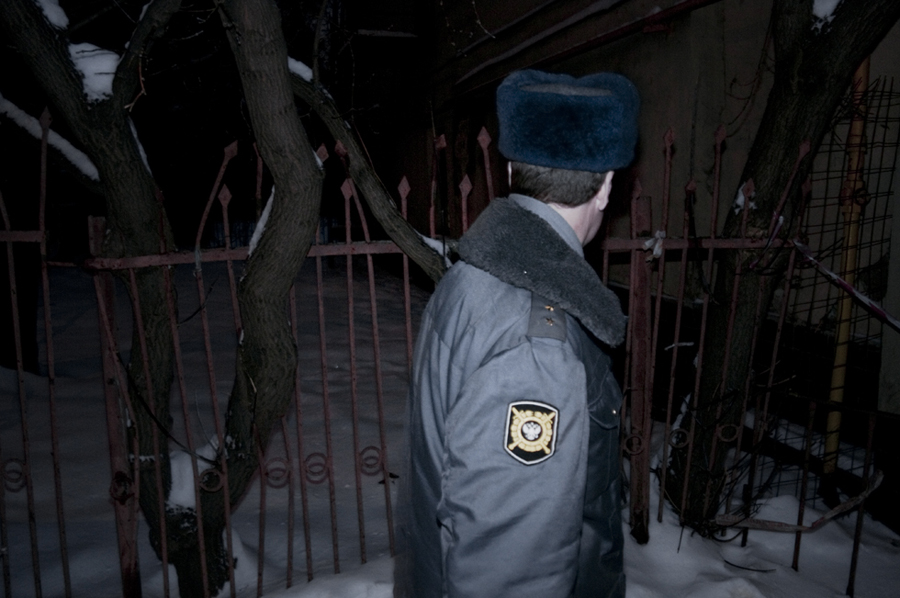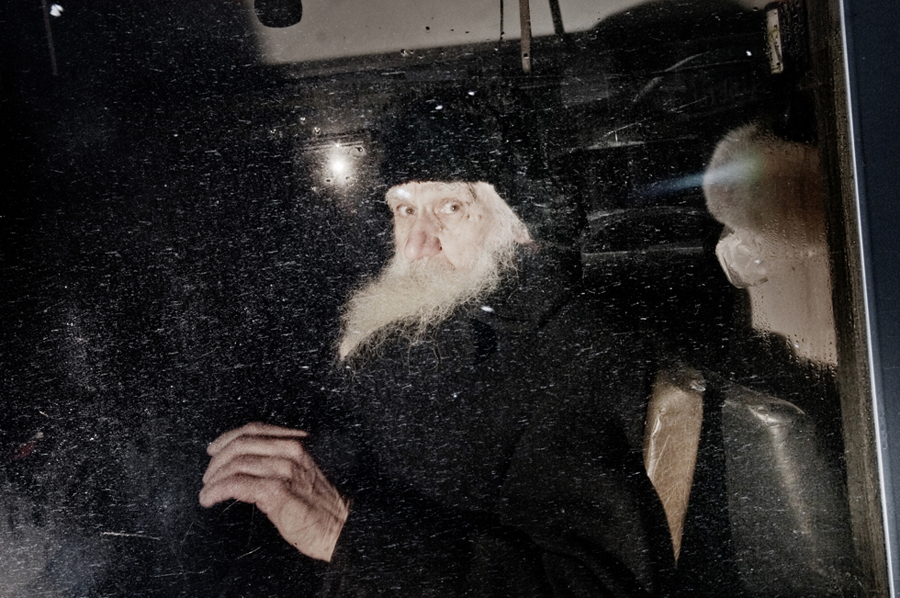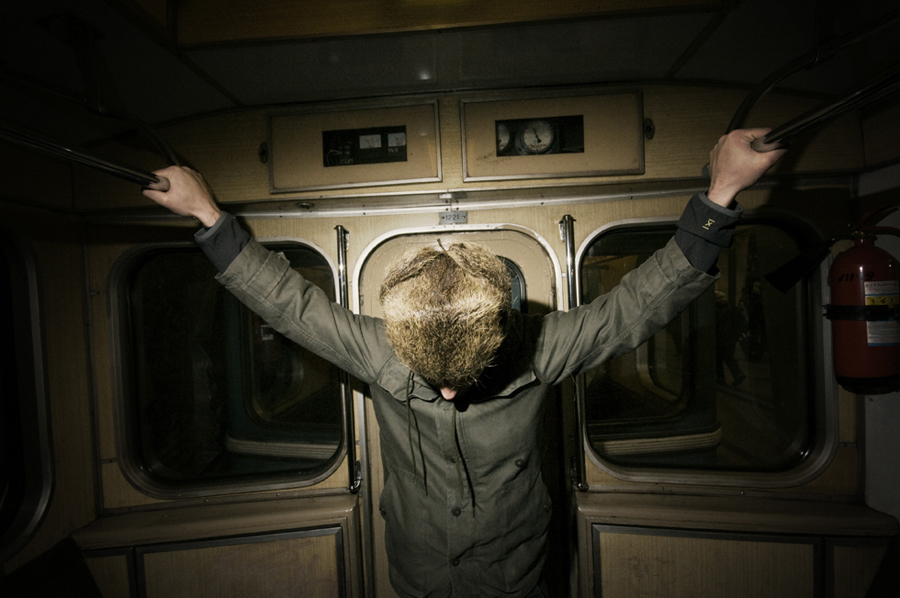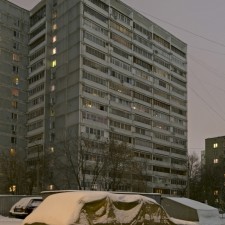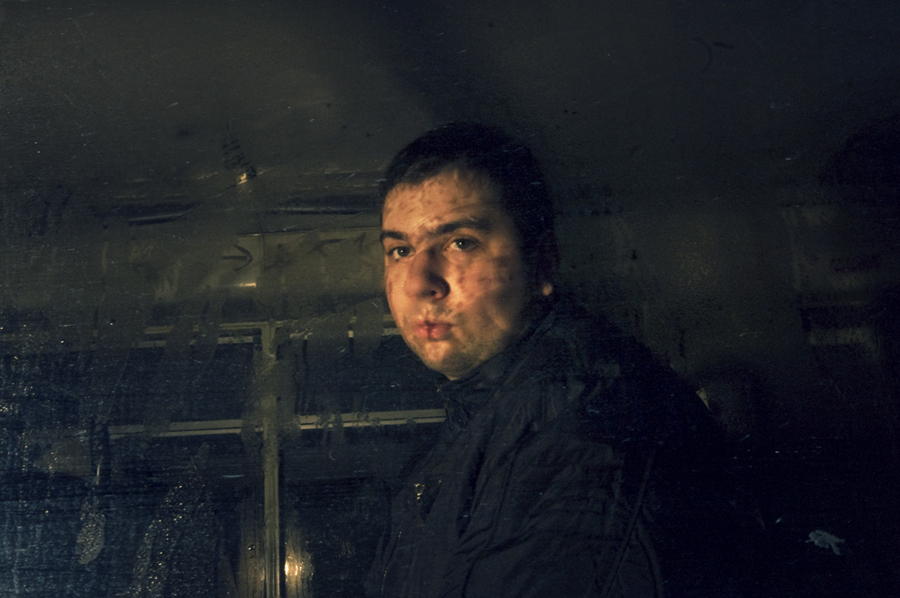A thin and an invisible ice layer, which makes the free movement difficult and damages our self-confidence to choose a direction. An invisible barrier which has a fearful influence on us when moving from one place to another.
Leaning in a kind of imaginary wall which makes our path easier and which makes decisions for us. The city is an alien nucleus, full of companions, but empty of partners. Transported by an intangible flow, addressed to observe as extras in a plot with an agreed end.
Moscow is the Soviet paradigm, an enormous city. It has been unknown for other comparable world cities as regards area and population, but neither with the same social system nor with the same regime, since a few years ago. It looks like there is a dislocation in its inhabitants due to the impact of a complex reality, of the result of a convulsed history, which has gone from the tsarist feudalism to the dictatorship of the proletariat, and from communism to the recent economic liberalism. A religion with a strong ideological character, a pillar of the ancient regime and a great barrier for the social change. A difficult position for people, who are obliged to follow trails and who are so little taken into account when building a critic and constructive voice. Nowadays, it is not completely different. Puttin is carrying out a kind of politics based on the accumulation of power and on the concentration of powers in the Russian Federation instead of a real democracy. How does this affect its population? The evidence that an arbitrary law governs the state power can’t be denied. The capacity of thinking is placed in the State. A lot of people can say that “this is due to something”, avoiding, in this way, asking nothing to themselves. Why do they delegate thinking to others? Maybe, they do that not to feel marginalization and helplessness, to enforce, deceptively, the feelings of belonging to this society.
The Artist
Salvi Danés (b. 1985, Spain) makes use of an apparent documentary way of capturing the existing scenes he encounters while playing with the diverse possible readings and interpretations of the narratives depicted. His photographs focus on questions related to representation and subjectivity and was notably part of exhibitions at the International Festival of Photography of Tarragona in Spain (2012); at Circulation(s), Festival de la jeune photographie européenne in Paris, France (2012) and at the Festival für jungen fotojournalismus in Hannover, Germany (2012). In addition, he has been honored by FOAM, Sony World Photography Award, IPA, and many others recognitions.
My interest towards photography starts with the search for a means of physical expression that in turn is a means of representations of reality. Understood as a tool that adapts to the capture not only of the palpable and thus of the physic, but also of that which is intangible, of difficult capture due to its subtle and immediate nature, the capture of irrefutable moments in a concise way. Using a narrative tool to interpret and suggest through fractions of an own look. It is known that any means of expression, artistic or not, is also an introspective tool and of subsequent analysis of a content, usually more private than what the own creator thinks. In this sense, photography is able to establish a great degree of privacy, a narrow bond between the photographer, what s/he takes photos of and a possible spectator. This expressive dialogue is very attractive and suggestive, especially for the photographer or creator. The photograph gives you the basic tools to build, to capture scenes or ideas and give them a physical format. It is unquestionable that photography is tied to an eagerness to discover, through the lens, a new world, sometimes very close to the real vision but sometimes closer to an imaginary personal world. It is a way of giving voice to those things that for any motive call our attention and of giving shape to this relation. For instance, landscapes do not exist by themselves, landscapes are an invention. Their interpretation asks for some eyes to observe and to value them, for somebody who shapes them visually and who gives them an aesthetic category. A photograph is never the exact evidence of the event, but the interpretation of the person who captures it and gives it significance. That possibility of creating stories is what really I am fond of photography. What I mean is the interest that the image has of the usurpation of reality, the interpretation of the reality and the recreation of a new world. Thinking that a world of images can “substitute” a real world is a utopia, but the function that the image has as echo of the reality contributes to create a new physical, magical and suggestive world. Besides, photography achieves it in its highest degree, making it look like the model and paying tribute to it. Photography provides us, in the shape of echo, an extension of this model and it also gives us knowledge about this model beyond experience and independently from it. That is part of my thought about the possibilities of photography as a process of (re)creation and acknowledgment. [Official Website]



